A kilo of prevention is better than a ton of cure when it comes to plant and equipment fluid spills, writes Turlough Guerin.
Reducing the HSE and productivity risks from plant and equipment fluid spills, by taking action on the results of spill incident analysis, is in the interest of every astute mine manager. From a study over a year long, on a resource construction site with more than 20 types of heavy plant items (and 150 individual items), the plant and equipment most vulnerable to spills were loaders and excavators. Failing hydraulic hoses, o-rings, and hydraulic hose couplings represented 50 per cent of the specific spill sources. The take home? The rigour of inspection of hydraulic hoses and particularly their fittings is vital. Operations should increase the sharing of lessons learnt from previous spill events, and for managers and supervisors, enhance the reward and recognition of operators actively preventing leaks through early reporting.
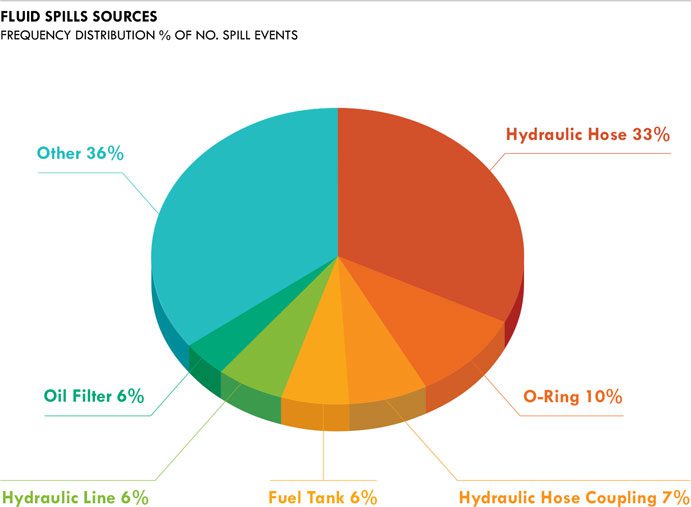 More than 370 million litres of oil leaks from hydraulic equipment every year and that excludes all the other sources of plant fluid losses. Imagine almost 2 million 205 L (or 44 gal) drums poured out on the ground or in waterways. If you find it hard to visualise these quantities: that’s equivalent to 150 Olympic sized swimming pools – full of oil. Apart from the downtime and productivity losses (if they weren’t enough), the safety and environmental ramifications should be of concern to project managers and mining operators alike.
More than 370 million litres of oil leaks from hydraulic equipment every year and that excludes all the other sources of plant fluid losses. Imagine almost 2 million 205 L (or 44 gal) drums poured out on the ground or in waterways. If you find it hard to visualise these quantities: that’s equivalent to 150 Olympic sized swimming pools – full of oil. Apart from the downtime and productivity losses (if they weren’t enough), the safety and environmental ramifications should be of concern to project managers and mining operators alike.
In terms of the root causes, half were from defective equipment parts and designs not anticipating the conditions on site.
UNDER PRESSURE
Hydraulic systems have advanced considerably over the past 30 years. But so too have hydraulic system operating pressures and response times. Mining and construction, requiring extensive earthworks and deploying large fixed and mobile plant under demanding project timelines, (often operating in environmentally-sensitive locations), is where the pressure is going to hit breaking point. The problem of leaking hoses, lines and their connectors has been around for as long as hydraulic systems themselves but with more system pressures and the need for greater HSE diligence, it is imperative attention be given to this aspect of operations.
 The current study describes the nature of fluid spill incidents occurring from operating more than 150 items of plant, where approximately 400 personnel were employed during a 24-hour-a-day operation. The study provided an analysis of plant and equipment fluid spill management during a 14-month period in the project, covering the main (earthworks) phase of the construction on the site. Each spill incident was investigated to determine the root cause or causes for the spill.
The current study describes the nature of fluid spill incidents occurring from operating more than 150 items of plant, where approximately 400 personnel were employed during a 24-hour-a-day operation. The study provided an analysis of plant and equipment fluid spill management during a 14-month period in the project, covering the main (earthworks) phase of the construction on the site. Each spill incident was investigated to determine the root cause or causes for the spill.
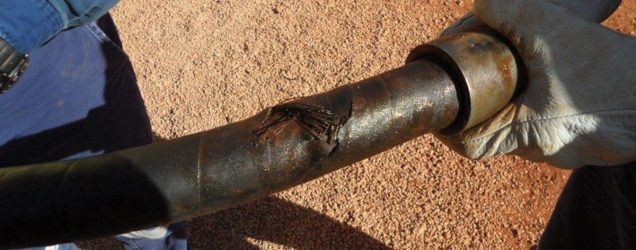 The main product released across all the 86 spill incidents was hydraulic fluid. Hydraulic fluid was present in 74 per cent of the 86 incidents, diesel 16 per cent, engine oil 7 per cent and the remaining 2 per cent was degreaser and brake fluid. During this time, it was estimated that a total of almost 3000 L or 2 per cent of all oil used (dispensed into plant and equipment) entered into the environment inadvertently during this period.
The main product released across all the 86 spill incidents was hydraulic fluid. Hydraulic fluid was present in 74 per cent of the 86 incidents, diesel 16 per cent, engine oil 7 per cent and the remaining 2 per cent was degreaser and brake fluid. During this time, it was estimated that a total of almost 3000 L or 2 per cent of all oil used (dispensed into plant and equipment) entered into the environment inadvertently during this period.
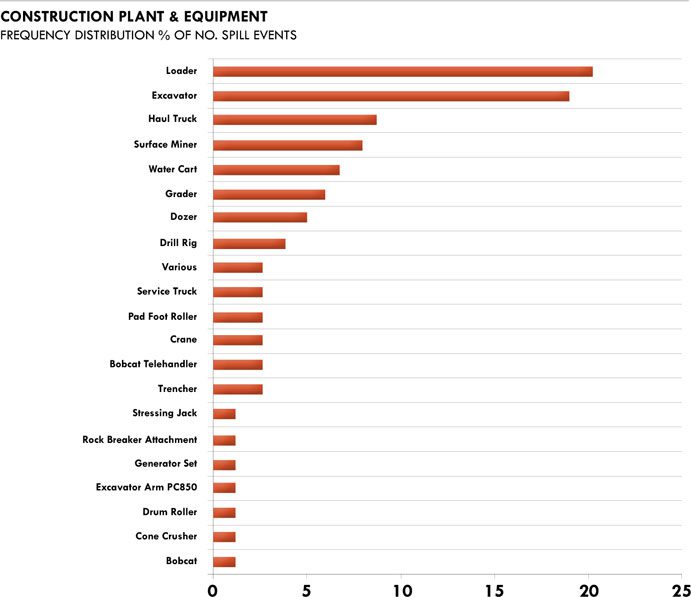 REGULAR CHECK-UPS
REGULAR CHECK-UPS
The spills were predominantly in the main earthworks area of the site. There were a total of 20 different types of plant and equipment involved in the spill incidents. Of these, 8 types accounted for 80 per cent of these incidents. These eight types were, in decreasing frequency of involvement, as follows: loaders, excavators, haul trucks, a surface miner, water carts (i.e. trucks), graders, dozers, and a drill rig. Loaders and excavators were the most likely items of plant to be involved in spill incidents accounting for approximately 40 per cent. The most frequent number of spills occurred on loaders (17), excavator (16) and haul trucks (8) – these are the plant to keep a close eye on.
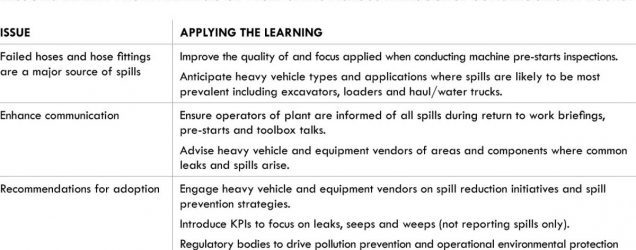 THE DIAGNOSIS?
THE DIAGNOSIS?
Four root causes could explain 60 per cent of spill incidents. These root causes were typically associated with failures in the hydraulic system such as connectors and o-rings. These findings suggest that at least a portion of the spill incidents could be readily controlled or reduced. For example, the cause “Incorrect Procedures Followed” can be addressed by increasing the effectiveness of training particularly in the use and handling of heavy equipment. The cause “Impact With an Object” is also able to be reduced by targeting safer handling and use of the heavy equipment, thereby reducing collisions and accidents.
Apart from the downtime and productivity losses (if they weren’t enough), the safety and environmental ramifications should be of concern to project managers and mining operators alike.
GETTING BACK TO WORK
In summary, failed hydraulic hoses and fittings are the most common causes of hydraulic fluid spills. In terms of the root causes, half were from defective equipment parts and designs not anticipating the conditions on site. A smaller proportion of root causes were identified as “Incorrect Procedures Followed”, “Equipment Impacting With Other Objects”, “No Inspection”, “Operators Accepting to Deviate from Procedure”, “Mistakes (or “mental slips”), “Inadequate Hazard Analysis”, and “Operator’s Understanding of Equipment Needing Improvement” – all within the control of the constructor or mine operator.
The analysis provided here gives some further insights into how spills occur and where your next spill may come.
No mine or project manager wants down time from a spill, especially as it puts operator’s safety in jeopardy, exposes the operation to environmental prosecutions, and pushes production up the cost curve. Plant and equipment is designed to run so getting support from upper management, operators and vendors is key for those teams responsible for plant and equipment maintenance and performance, to avoid spill events.
The rigour of inspection of hydraulic hoses and particularly their fittings is vital.
 PROFILE
PROFILE
DR TURLOUGH GUERIN
Dr Turlough Guerin has worked for Chevron and Thiess on the Gorgon LNG Project; Rio Tinto on iron ore, aluminium, bauxite and coal expansion projects, downstream and midstream O&G site management, compliance and approvals; and with Shell and Kaiser Engineers in decommissioning. He has also developed high performing teams in the telecommunications and technology sector while with Telstra and has led market research for Motorola’s emerging BioChip start-up.
While contracting to Levine Fricke Recon also in the Midwestern US, Dr Guerin implemented environmental projects with Amerigas (Federal EPA reporting), Johns Manville (asbestos investigations) and General Motors (site decontamination).
Dr Guerin currently leads the approvals and compliance program for the construction of the largest utility-scale solar project in southern hemisphere.
Dr Guerin currently holds directorships with The Climate Alliance, Orica’s Port Botany Community Participation Group, Australian Institute of Agriculture and Access Melbourne (Chairman). For more information on Dr Guerin and his work visit http://au.linkedin.com/in/turloughguerin.


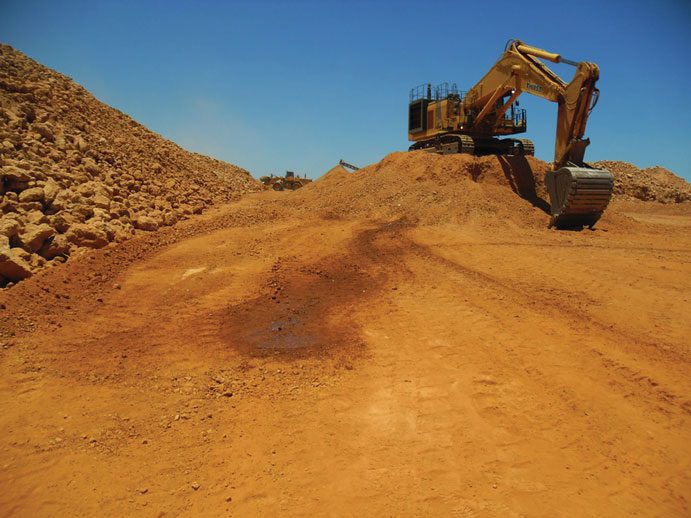
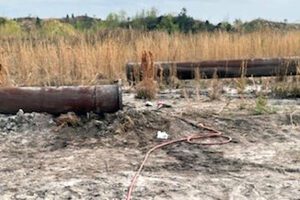
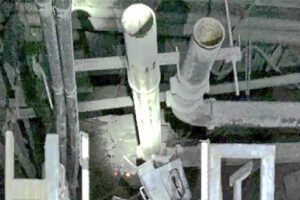
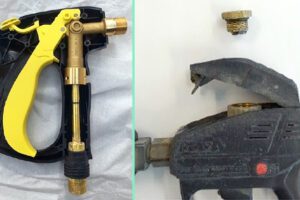








Add Comment